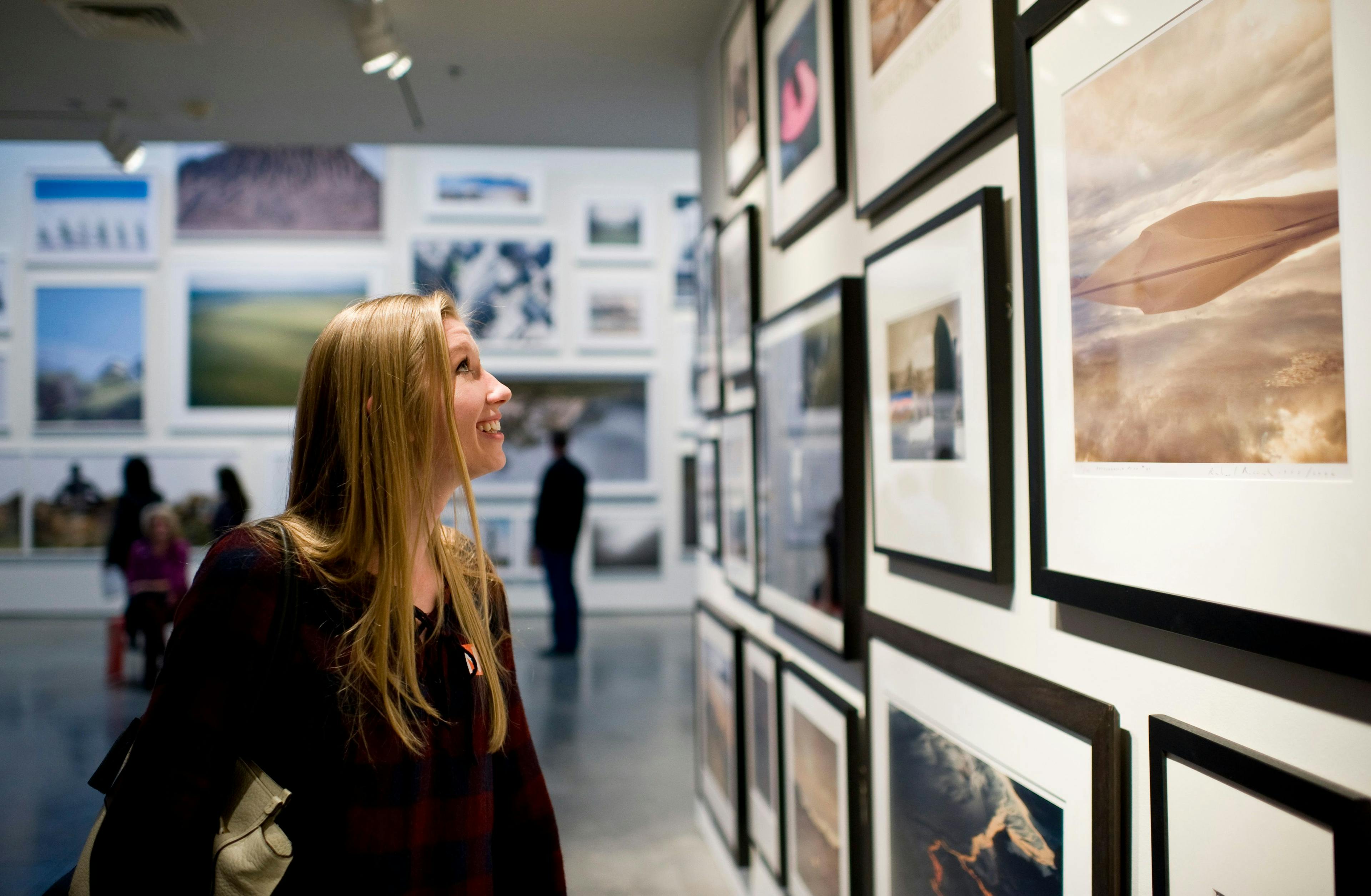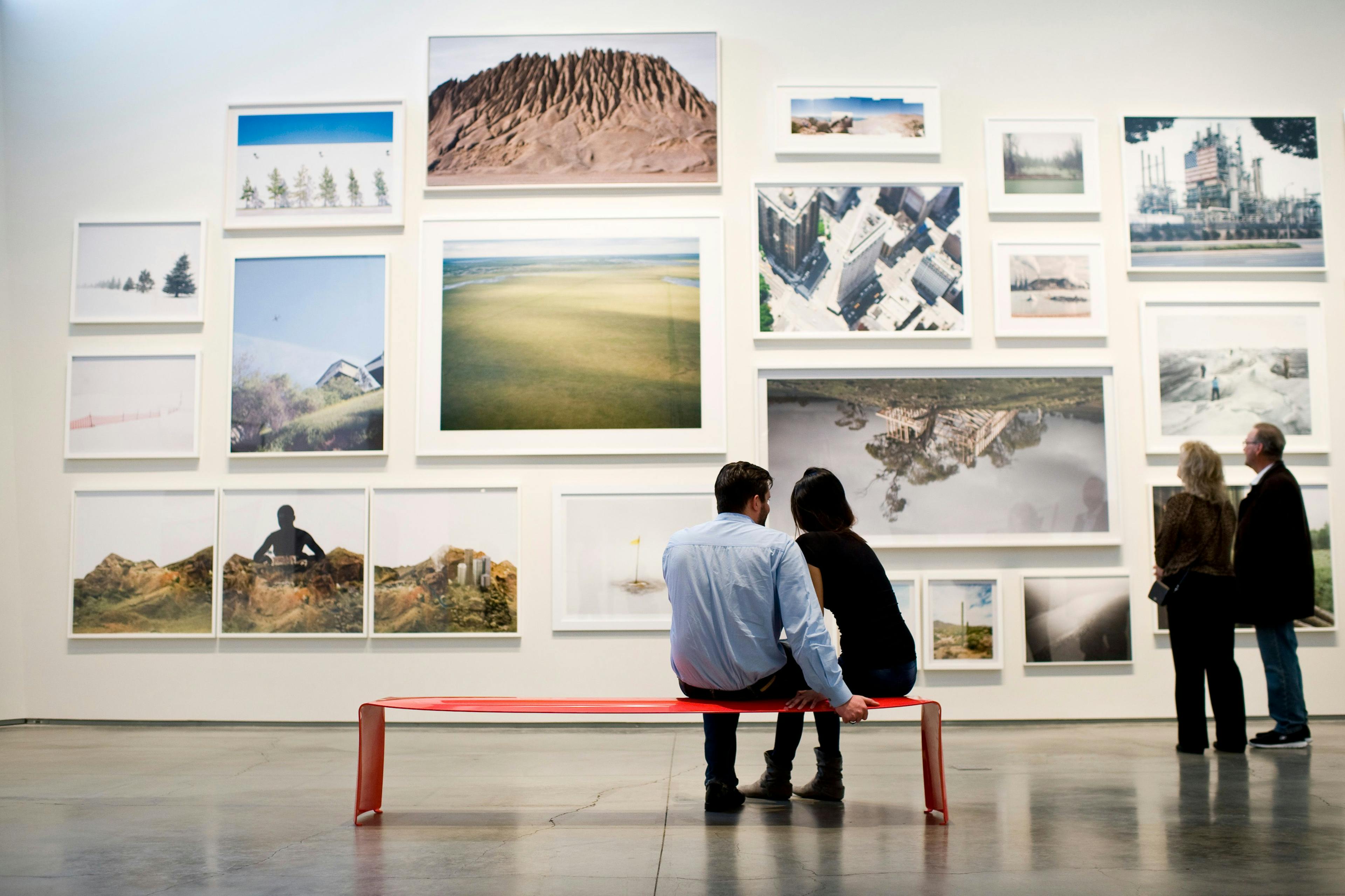What Is a Regional Museum?
Gabriella Angeleti
Early photograph (c.1937) of the Wheelwright Museum of the American Indian (initially named the House of Navajo Prayer), showing its lastingly distinct architecture. Photograph by Ernest Knee. Courtesy of the Wheelwright Museum.
When I started working on this piece, someone told me regional museums are places “where the frontdesk staff feels bad asking you for admission.” The joke suggests that the term “regional” is synonymous with “second-tier,” but it echoes a bias that several regional museum directors and curators have shared with me over the last few weeks: the term “regional” is restrictive and has disparaging undertones, but nonetheless make up the fabric of the American museum network.
So, what is a regional museum, and what is their purpose? While it objectively means “museums with a regional focus,” the consensus among “coastal elites” and even some of the interviewees is that the term is almost pejorative, and it’s dismissive of the national and international impact of museums operating outside of major art hubs that contribute to the $50 billion American museum sector (an average annual figure, according to the American Alliance of Museums).
In my experience working in art media, specifically in a hybrid print and digital news-based publication, regional museums would normally only merit coverage when there was a deaccessioning scandal, a notable acquisition, an inauguration with a star architect spearheading the project, or a disaster. There were some exceptions for art destinations, projects with an activist bent, and lighter pieces during the summer slowdown, but our general editorial strategy was based on the fact that more than 90% of our readers were in London, New York, Los Angeles, or Hong Kong—so why should they care?
The museum directors and curators I interviewed for this piece (unfortunately we could not include them all) joined me in attempting to unpack the meaning of the term. We also explored each of their institutions’ outsized contributions to American art, and their impact on communities near and far.
One overarching theme: regional museums were often born out of the need to preserve and promulgate the arts and culture of marginalized communities, and have origin stories rooted in activism. The Wheelwright Museum of the American Indian in Santa Fe, for example, was co-founded in 1937 by the Navajo medicine-man Hosteen Klah and the Boston shipping heiress Mary Cabot Wheelwright as tensions over religious oppression loomed over tribal-federal relations. Wheelwright, who came to New Mexico in 1918 and experienced several Navajo ceremonies, envisioned that the institution, founded as the Museum of Navajo Ceremonial Art, would support Navajo communities in safekeeping traditions that could disappear within generations.
The Wheelwright’s director, Henrietta Lidchi, tells Discovery that the founding of the Wheelwright “represents a historic political reorientation toward Indigenous communities, or a corrective to the extractive tendencies of state or federal institutions.”
She adds, “We exist within a specific region, so the Wheelwright, and the other surrounding network of museums dedicated to the Indigenous people of New Mexico, was created to provide communities access to their own heritage.”
The museum has been responsive to change over the years, repatriating its Navajo ceremonial collection to the Navajo Nation in the 1970s to rebrand as a contemporary Indigenous art museum, becoming one of the first to exhibit some then-emerging artists like Harry Fonseca. In addition to a vast anthropological research archive, which includes more than 2,000 recordings of Navajo ceremonial chants collected in the 1930s and 1940s by Wheelwright and Klah, the museum holds a 12,000-piece collection with extensive holdings of Indigenous contemporary art, a demographic that remains under-represented in non-regional museum collections.
“The growth of an institution is often measured as capital growth, rather than intellectual or cultural growth, and putting them into categories further limits their historical relevance from being properly understood,” Lidchi says, “The term ‘regional museum’ is difficult to define because these are places of memory and historic importance that do not fit one general description. The truth is that smaller and older institutions are often underappreciated or eclipsed by the more dominant contemporary art spaces on both the regional and international level.”
Over in the midwest, the late heiress and philanthropist Ruth DeYoung Kohler II elevated the John Michael Kohler Arts Center (JMKAC) in Sheboygan, Wisconsin from a small nonprofit to an internationally-renowned museum while she served as director between 1972-2016. Pouring much of her fortune into building the museum’s collection, she is credited with having discovered the work of the then-unknown Wisconsin artist Eugene Von Bruenchenhein, acquiring more than six thousand works by the artist shortly after his death, and supported other local self-taught artists like James Tellen, who over 15 years created an expansive sculpture garden in the woods just south of the city that is preserved by the JMKAC.
But while these and other cornerstones of the museum’s collection come from immediate “regional” sources, its acquisition focus, programming and initiatives now have a global scope. It has also launched projects that would not exist anywhere else, like the Art Preserve, a separate $40 million museum and research center that houses a 25,000-piece collection dedicated to artist-built environments, some from other regions of America.
“The term ‘regional’ limits the exposure and dialogues that we want to have, so I would disagree that it aligns with us—unless regional means community-focused, then of course we are a regional museum,” says the JMKAC’s director, Amy Horst, “Our mission is to make this work nationally and internationally relevant while also providing connection points for our regional audiences, or explaining to them why this space exists here.”
Unlike museums with a specific niche, regional contemporary art spaces seem to have a harder time finding their footing on a national scale. They are primarily non-collecting institutions that are perpetually changing with the incoming of each director or curator. For example, the Utah Museum of Contemporary Art (UMOCA) in Salt Lake City was little-known outside of the region until the arrival of curator Aaron Moulton in 2012, who organized the Utah Biennial in 2013—an acclaimed one-off exhibition that sought to “re-imagine the possibilities and relevance of regionalism within an ever-globalizing perspective on contemporary art and cultural production,” Moulton said at the time.

The show shot UMOCA to international fame, applauded for its unique approach to examining the artistic manifestations of the spirituality and mythology of the region. The same year, while the exhibition was still on, Moulton announced he would be leaving UMOCA and later joined Gagosian in Los Angeles. Then came Rebecca Maksym, who originally joined as an interim curator and less than three years later was replaced by Jared Steffensen, a native Utah artist and former registrar at the museum.
“We’re constantly asking ourselves: well, we’re not New York and we’re not Los Angeles, so what are we? I feel like we’re always getting closer to dialing that in, but another curator could bring in different ideas,” Steffensen says. “The curators before me and I have all had very different approaches—in my practice, I do tend to focus on the artists that we have in the region.”
Steffensen helped develop the museum’s first artist-in-residence program, which provides local artists a year-long studio and financial support, and organized the exhibition A Greater Utah, a survey of 30 artists that hopes to build on the success of the Utah Biennial. “It’s obvious that people don’t tend to stay in Utah—there’s clearly more opportunities outside of the state,” he says, “So we’re trying to figure out how we can build community and also provide more opportunities for artists who are already here.”
The Nevada Museum of Art (NMA) in Reno, which has seen meteoric growth over the last few years, has carved a niche in works dealing with art and the landscape, with some significant holdings from its collection related to art made in and around the Great Basin, like Michael Heizer’s City. The museum reached a milestone in 2009 when it established the Center for Art + Environment, a first-of-its-kind research department and archive collection that houses more than 12,000 artworks by over 500 international artists.

“Regional museums don’t typically have the resources to become comprehensive research centers,” says the center’s director, William Fox, previously an independent scholar working as a researcher at the Getty Research Institute, “I was told the Altered Landscape Collection had toured various places around the world, there were curators following the idea of art in the environment, and the education team of the museum was likewise fascinated by the idea and interested in making programs about it, so I was asked to help them figure out how to do that, and it worked.”
When plans for a Las Vegas branch of the museum were scrapped amid the pandemic, the NMA continued with its expansion master plan which also included a $60 million construction and endowment project for the Reno campus to give the museum enhanced galleries, research spaces, and storage facilities. As the only accredited art museum in Nevada, and the only art museum serving a state of over three million people, the NMA hopes the expansion will provide the public better access to educational programs and to its world-class collection and research archive, which spans more than 1.5 million pieces and continues to grow exponentially in geographic scope.
The 50,000-square-feet expansion broke ground earlier this year and is expected to open in 2025. “It was crucial because the most important work that has been done on the art and environment anywhere in the world is contained within the walls of around five regional museums, including ours,” Fox says, “It’s not being done by the Met—not because they are hostile to it, but because they have a much different encyclopedic charge than we do.”
He adds, “I don’t think that a museum necessarily has to be an attempt to bring all the centuries of art into an easily accessible place. If it’s going to work well, it has to be more focused, usually. If you have a focus, you can become the best at that focus in the world and people will come to you—even if you’re in a place like Nevada.”

